Free Camping: How to Finding Places to Wild Camp (US vs Europe)
Free camping is an amazing way to see the world; it often takes you to remote, beautiful locations that you wouldn’t come across if you were staying in hotels, or even in paid campsites. But what exactly is free camping?
The clue is in the name, free camping is when you can camp for free. As you don’t have to pay there are usually no facilities provided, so you need to be completely self-sufficient, perfect for campervans and for seeing the world on a budget.
If you haven’t heard of the term free camping before, it may be because you have come across it being called something else; for example wild camping, boondocking, stealth camping, right to roam and dry camping are all commonly used terms, referring to the same thing.
Free camping is sometimes seen as a legal grey area, especially in Europe, so we’re here to give you some guidelines on how to successfully free camp.
Itching to try out Full Time Van Life? Want to reveal to the world that you’re a weekend warrior? Head over to our brand new Facebook Group! It’s a place to pick up vanlife tips, share ideas, and meet other van life enthusiasts from around the globe!
Where can I camp for free?
One thing that doesn’t change when free camping, no matter where you are in the world, is how important it is to leave no trace. This should be an obvious point, but you’d be surprised at how many beautiful spots are covered in litter or have an abundance of toilet paper stuck in the bush.
Free camping is a privilege, and the landscapes that you’re choosing to sleep on should be cared for and respected. The more the land is neglected, the harder boondocking will become.
Free camping in the USA
Having travelled in both Europe and the USA in campervans, I found the USA to have much stricter regulations when it came to free camping.
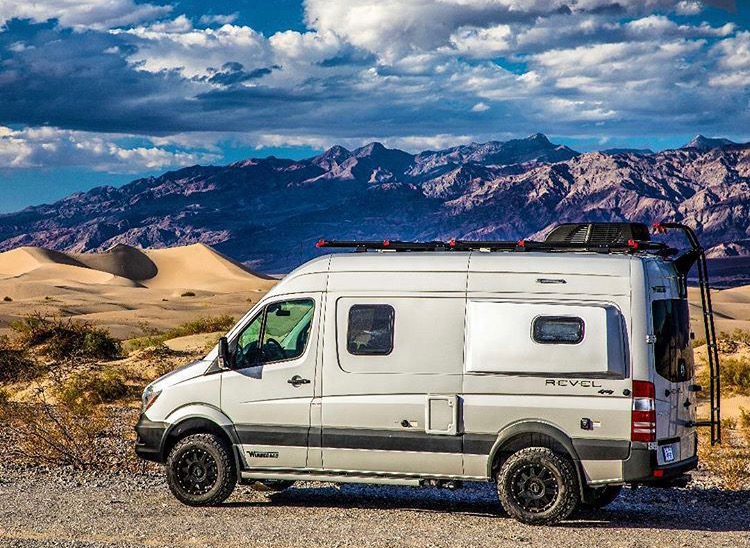
Although this sounds like a bad thing, I found that these laws made it easier to know where you are legally allowed to stay and where to avoid, making finding free camping spots easier.
You will find an abundance of undeveloped pubic land across the USA where free camping is commonplace, think BLM land and National Forests.
Bureau of land management (BLM)
The BLM boasts more than 400 locations that cover nearly 250 million acres of land in the US, and all of this is open for wild camping. If you want to be in the middle of nowhere then BLM land is the place to do it, as you can camp wherever you can park, great for anyone with a 4×4 camper. There are usually no amenities and few rules on BLM land except to keep your stay in the area to a maximum of 14 days at a time and to, of course, respect the land.
National Forests
National Forests work in much the same way as BLM lands, only some of these areas require a permit for camping to ensure that there are not too many people using the land at once.
State Forests
State Forests are not to be confused for National Forests as they have various regulations and often also require permits, so are worth checking out before trying free camping, by visiting their website or speaking to a ranger.
Finding a free camping spot in the USA
As there is so much BLM and National Forest land, finding somewhere to free camp is usually generally accessible in the USA.
To discover suitable land then head to their websites and to find the best spots and get on the ground info, find the local land’s office by typing’ ranger station’ into your digital map app. Chatting to rangers is a great way to get advice on where to camp and what to do in the local area.
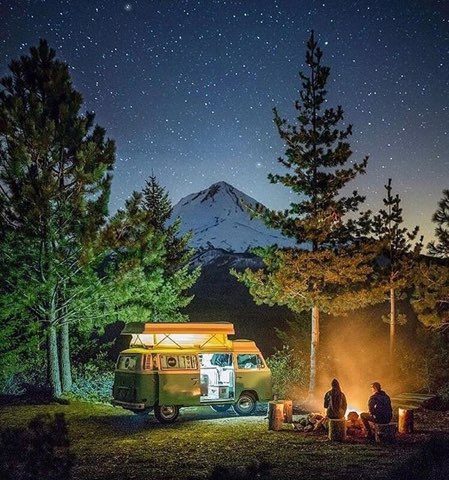
There are a whole range of apps and websites that will help you find some great free camping spots. Most resources can be added to by anyone with an account, and locations include a description and list of amenities.
iOverlander is the app that I used the most when in the States, it pinpoints location on a map, and you can search for specific things such as water and dumping facilities which is helpful, although it could be improved with photos! freecampsites.net is another excellent resource with a vast amount of camping spots on it, although it is not mobile-friendly it is worth checking out.
There are plenty of apps out there; these are just the two resources I used most frequently when in the USA. I would recommend downloading a few and trying them out for yourself. It is worth bearing in mind that the free apps are generally better as, although the interface may not be as user friendly, more people use them and so more people will upload the locations they have found.
If you’re going to use camping apps, don’t forget to share any great spots you discover so other people can enjoy them too!
Free camping in Europe
Finding out the laws for free camping across Europe can be more complicated than in America as each country has its own rules to follow.
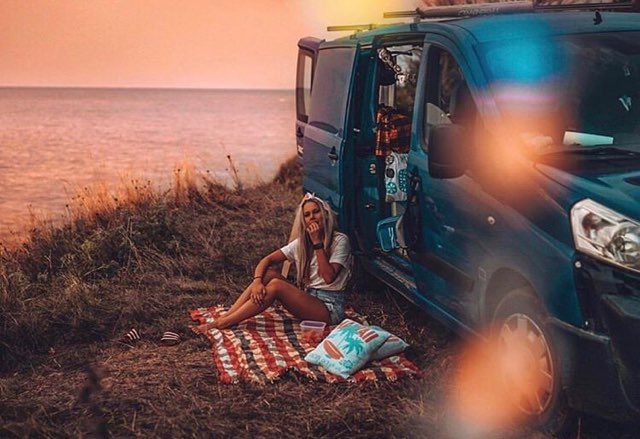
For example, Scotland has the right to roam, meaning you can camp almost anywhere, but in England, free camping is generally illegal. Many countries also differentiate between camping and sleeping in a vehicle. For example, I spent the night in Sardinia with no problems where a neighbour got fined because their camper had a pop-top open which was classed as camping, not parking.
The only European countries where free camping is legal and encouraged are Sweden, Norway and Scotland but that doesn’t mean that you can’t wild camp elsewhere. I’ve spent almost two years travelling across Europe, only paying for one campsite (Venice) and never getting a fine.
Many municipalities across Europe will have car parks designated for campervans to spend the night, these are well signposted and usually offer free drinking water and toilet disposal services, some will have electrical hookups.
These camper spots are often not beautiful, but they are a great resource and make living on the road in Europe pretty easy. Each site has there own rules on how long you can stay that will be signposted when you arrive, along with any other regulations. Often these spots are just a short walk from a point of interest or a metro journey to a touristy city.
If it’s beautiful views you’re after when wild camping then you are heading into a grey-er legal area. However, if you are respectful, then free camping is often tolerated and easy, it also helps if your camper isn’t huge…
I’ve stayed in some great spots across Europe, including Lake Como, The Black Forest, and The Rhone-Alps as well as many beach park ups, all for free. Where National Forests are good areas to head for in the States they, and other National Parks, are generally to be avoided in Europe as the rules are more greatly enforced here and you are more likely to get moved on.
Obviously, research the laws for each country you plan on visiting so you know what you can and can’t do.
Finding a free camping spot in Europe
Just like in America, using apps is a great way to find free camping areas and municipality camper spots. Although iOverlander does exist in Europe, it isn’t as comprehensive as the version for the States, and I have found park4night to be the best camping app, by a long way.
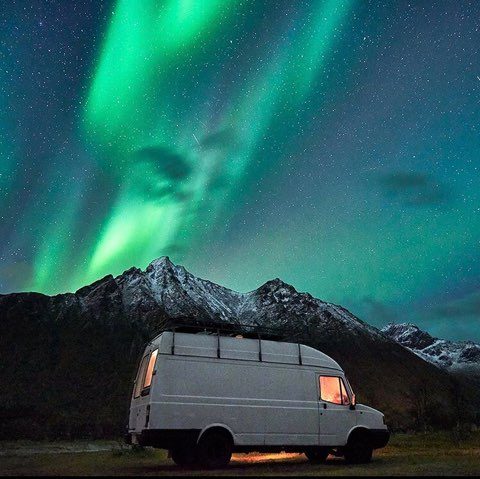
Park4night is an excellent app with points marked on a map to discover. You can filter the search to include things like water, toilet disposal and electricity or to just show nature spots. Anyone can create a point, and anyone can subsequently comment on this spot, a brilliant feature for up to date information. Plus, photos can be uploaded meaning you can see where you’re going before you get there, allowing you to choose the most beautiful view!
While I only use park4night (which is free) when in Europe there are other resources out there. Try VWFurgo, a website showing camping in your area which is especially good if you’re looking for something in Spanish (but is also useful if you can’t speak Spanish!).
If you’re old school and are more comfortable with a book in hand, then get yourself a copy of the ‘Motorhome Guide Camperstop Europe‘ which is updated with new GPS coordinates every year.
Stealth Camping
One type of free camping that is the same in both America and Europe is stealth camping.
Stealth camping is when you are parking somewhere that isn’t intended for camping but are going to try and stay anyway. This can be a great way to see bigger cities on a budget if campsites are too expensive for you but it does come at the risk of a fined or being asked to leave.
To successfully stealth camp you need to be fully self contained, including having somewhere to use the bathroom in your van. Stealth camping is much easier if you are travelling in a Sprinter style camper, or a self convert, that doesn’t stand out too much from the outside. It would be tricky to hide a huge RV!
Final Thoughts…
Free camping can be daunting if you’ve never done it before, but it is a spectacular way to travel, allowing you to visit secluded locations and connect with nature.
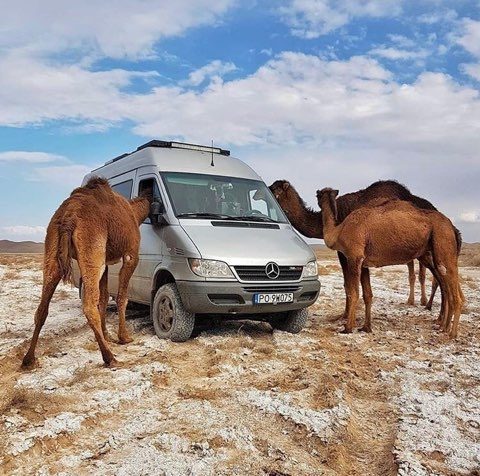
There are a couple of good ways to get into wild camping if you are anxious about it. Either go with someone who has done it before who can show you the ropes and suggest a good spot, or travel to an area not far from home or a friend, so if you don’t enjoy it, you don’t have to stay.
Once you’re over the initial hurdle of getting out there, free camping is a fantastic way to road trip, taking you to beautiful places and allowing you to meet interesting people along the way. I wouldn’t travel any other way.
For more content from the Van Clan team, follow us on Facebook, Instagram and Twitter.



COMMENTS
Please note that all comments will be checked by our team before being approved.